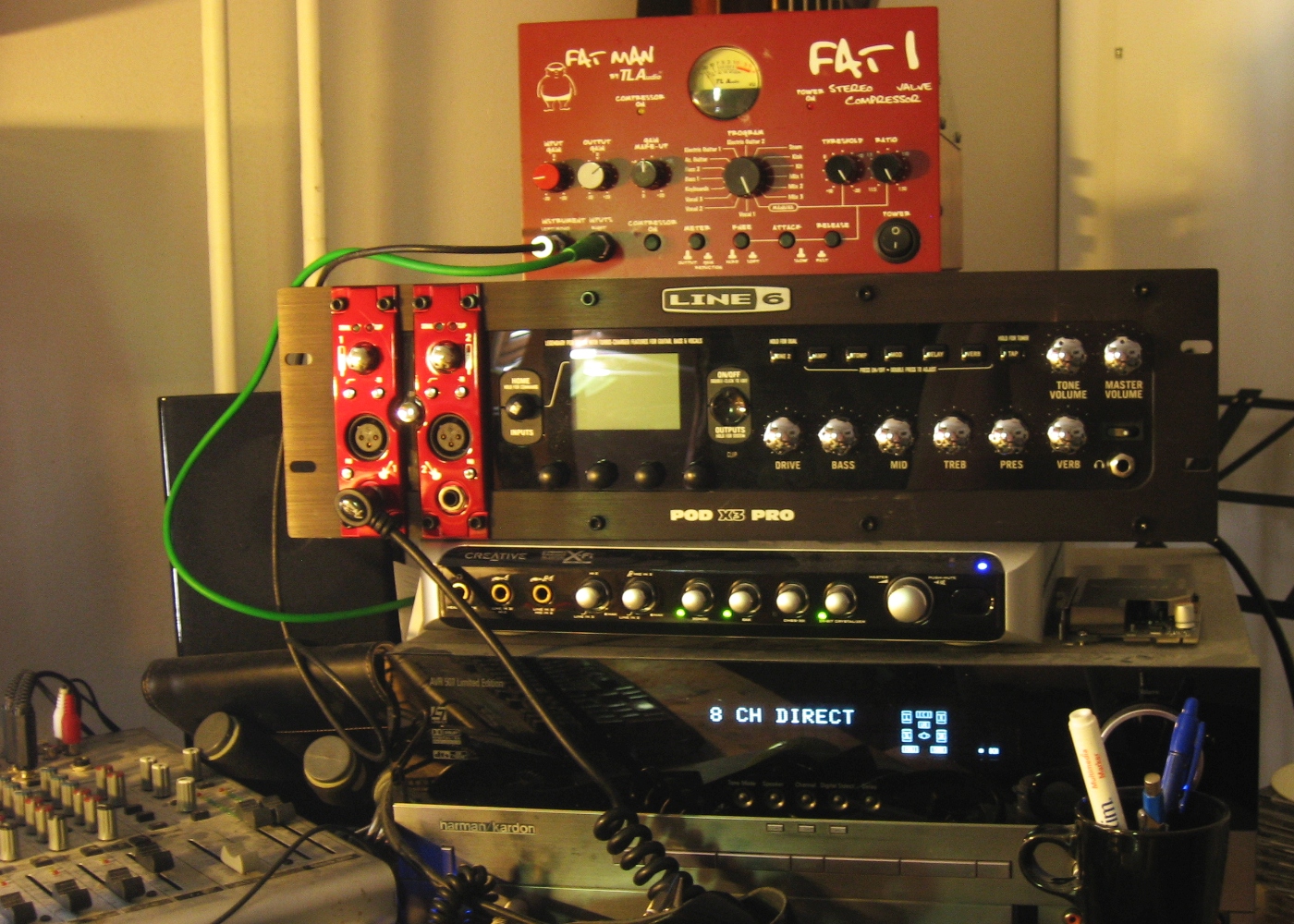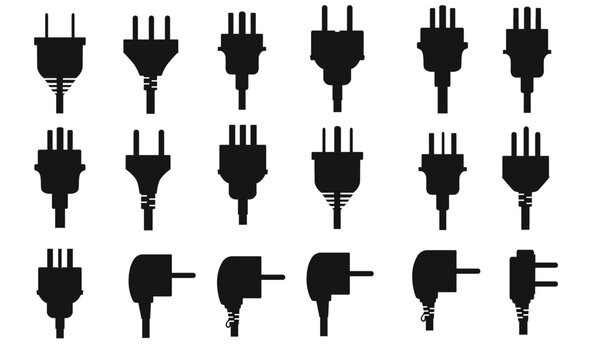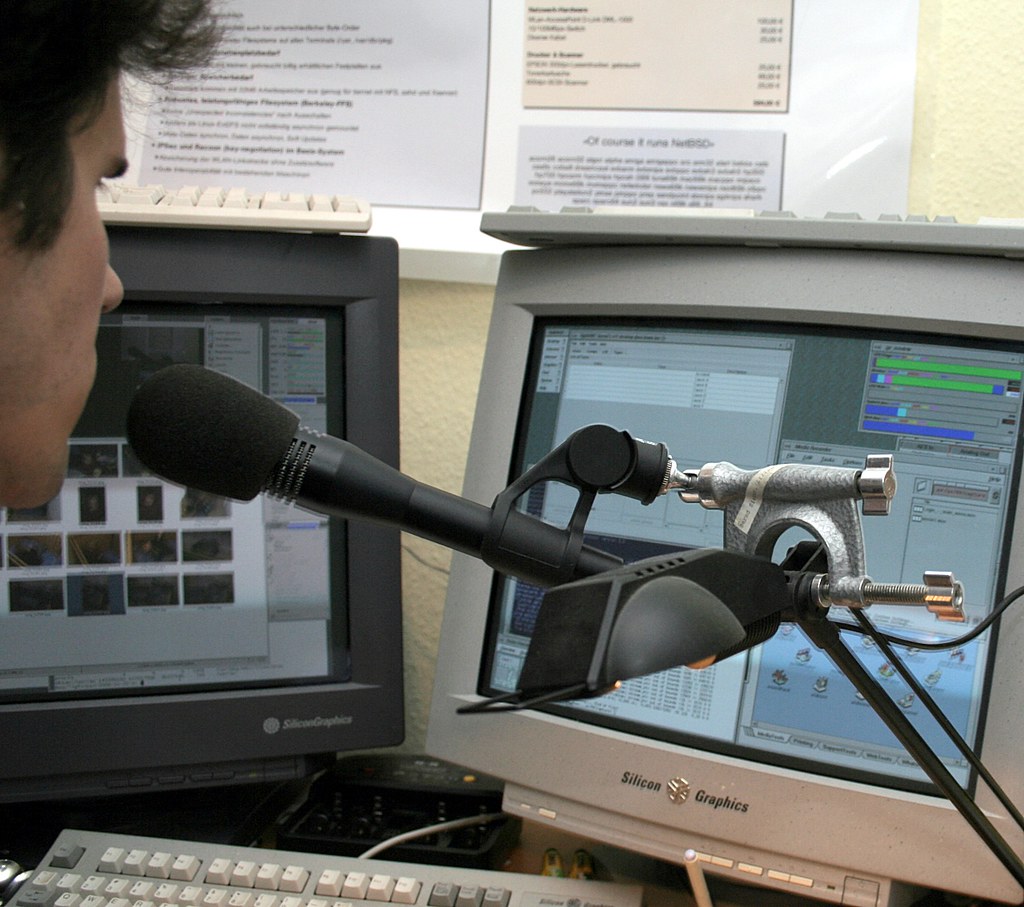External sound cards are an essential piece of equipment for any music producer who wants to take their recording and mixing to the next level. These devices, also known as digital audio interfaces, connect to a computer through USB or other ports and offer enhanced audio quality, low latency, and multiple input/output channels. In this article, we will be discussing the ten best external sound cards for music production in 2021, and providing all the information you need to choose the right one for your specific needs.
Table of Contents

Benefits of Using an External Sound Card for Music Production
External Sound Cards are a vital component of a professional-grade music production setup. They offer a variety of benefits that can significantly improve the quality of your recordings and playback.
Improved Audio Quality
External sound cards provide better analog-to-digital and digital-to-analog conversion than the built-in sound card on most computers. This results in a higher quality of audio recordings and playback that can make a significant difference to the output of your music.
Low Latency
Latency refers to the time delay between the moment a sound is produced and the moment it is heard. When recording music, low latency is crucial because it allows you to hear the sound in real-time as you play or sing. External sound cards typically have lower latency than built-in sound cards, making them ideal for music production.
Multiple I/O Channels
External sound cards often have multiple I/O channels. Having multiple I/O channels allows you to record multiple instruments or microphones simultaneously, or to connect multiple sets of speakers or headphones for monitoring. This is a great feature for professional musicians or producers who require a complex setup for their recording sessions.
Compatibility with Popular DAWs
External sound cards are compatible with popular Digital Audio Workstations (DAWs) such as Pro Tools, Logic Pro X, and Ableton Live. This ensures that you can seamlessly integrate your external sound card with your preferred software and get the best possible audio quality. This feature is especially useful for musicians and producers who are looking to streamline their music production process.
In summary, External Sound Cards improve the quality and functionality of your music production. They offer improved audio quality, low latency, multiple I/O channels, and compatibility with popular DAWs, making them a must-have for any serious music producer.

My Experience with External Sound Cards
As a music producer, I faced difficulties in achieving the desired audio quality while recording my music. Initially, I was using the built-in sound card on my computer, but it failed to deliver the desired sound quality. So, I decided to invest in an external sound card. After researching and reading reviews, I opted for the Focusrite Scarlett 2i2 due to its high-quality audio specifications.
Once I set up the Scarlett 2i2 and configured it with my Digital Audio Workstation, I observed a significant improvement in the audio quality of my recordings. The analog-to-digital and digital-to-analog conversion of the Scarlett 2i2 was far superior to my computer’s built-in sound card. This resulted in clearer and more detailed recordings.
The low latency of the Scarlett 2i2 was an added advantage as it allowed me to hear the recordings in real-time while playing or singing. This made it convenient for me to make adjustments on the spot and achieve the desired sound.
Overall, investing in an external sound card such as the Scarlett 2i2 was a game-changer for my music production. The improvement in audio quality and low latency have helped me create better recordings, thereby taking my music to the next level.
Understanding Sample Rates and Bit Depths
Sample rates and bit depths are two crucial technical specifications to consider when selecting an external sound card for music production. Sample rate describes the number of times per second the sound is sampled, while bit depth is the number of bits used to represent each sample.
Higher sample rates and bit depths generally lead to higher audio quality, but they also need more processing power and storage space. For music production, it is recommended to use an external sound card with a sample rate of at least 44.1 kHz and a bit depth of at least 16 bits. However, some higher-end external sound cards may offer sample rates of up to 192 kHz and bit depths of up to 24 bits for even better audio quality.
It’s worth noting that higher sample rates and bit depths require more storage space and processing power. On the other hand, lower sample rates and bit depths result in lower audio quality but consume fewer resources. Therefore, it’s essential to strike a balance between audio quality and resource consumption when selecting an external sound card for music production.
To get the best audio quality, it’s important to choose an external sound card that supports the sample rate and bit depth required by your music production software. For example, if your DAW requires a sample rate of 96 kHz and a bit depth of 24 bits, you should choose an external sound card that supports those specifications.
It’s also important to note that the sample rate and bit depth specifications of your music production project should match those of your external sound card to avoid any potential audio quality issues. Understanding sample rates and bit depths is crucial in selecting the best external sound card to meet your music production needs.

Input and Output Connectors
External sound cards are equipped with various input and output connectors to support different instruments and devices. Common input connectors include XLR, TRS, and RCA, while common output connectors include TRS, RCA, and headphone jacks.
When selecting an external sound card for your music production needs, it is essential to consider the types of input and output connectors required for your setup. If you are planning to record multiple instruments or microphones simultaneously, you will need an external sound card with multiple input connectors. Similarly, if you intend to connect multiple sets of speakers or headphones for monitoring, you will need an external sound card with multiple output connectors.
The number of input and output connectors required will depend on your specific needs. It is important to note that some external sound cards also offer phantom power, which is required for certain microphones that do not have their own power source.
Additionally, you must consider the type of connectors that your instruments and devices use. For instance, XLR connectors are commonly used for microphones, while TRS connectors are typically used for guitars and other instruments. RCA connectors are often used for consumer-level audio devices.
Therefore, when choosing an external sound card, ensure that it has the appropriate input and output connectors that are compatible with your instruments and devices. This consideration will help you to optimize your music production workflow and achieve the desired results.

Types of External Sound Cards for Music Production
External sound cards come in various shapes and sizes, but the most common types are USB, Thunderbolt, and PCI sound cards.
USB Sound Cards
USB sound cards are the most popular type of external sound cards for music production. They are easy to use and connect to your computer via a USB cable. They are also compatible with most computers and operating systems.
The main advantage of USB sound cards is their portability. They are small and lightweight, making them ideal for musicians who need to record on-the-go. They also come in a variety of sizes and price ranges, making them accessible to musicians on a budget.
However, USB sound cards may not be suitable for professional use due to their limited processing power and high latency compared to Thunderbolt sound cards.
Thunderbolt Sound Cards
Thunderbolt sound cards are the fastest and most powerful type of external sound card. They use Thunderbolt technology to transfer data between the sound card and the computer. Thunderbolt sound cards offer extremely low latency and high sample rates, making them ideal for professional music production.
However, Thunderbolt sound cards are expensive and require a Thunderbolt port on your computer to connect. They are also less portable than USB sound cards.
PCI Sound Cards
PCI sound cards are installed inside your computer, as opposed to being connected externally. They offer high-quality audio and low latency, but they can be difficult and time-consuming to install. PCI sound cards are also less portable than USB sound cards.
PCI sound cards are ideal for musicians and audio engineers who need to process large amounts of data at high speeds. They offer better performance compared to USB sound cards and are a more affordable alternative to Thunderbolt sound cards.
When choosing a sound card for music production, it’s important to consider your specific needs and budget. Each type of sound card has its advantages and disadvantages, and it’s up to you to decide which one is the best fit for your particular situation.

Top External Sound Cards for Music Production
When it comes to external sound cards for music production, there are many options available. However, we have narrowed down the top four external sound cards for music production:
Focusrite Scarlett 2i2
The Focusrite Scarlett 2i2 is one of the most popular USB sound cards for music production. It provides high-quality audio with a sample rate of up to 192kHz and a bit depth of up to 24 bits. The Scarlett 2i2 features two XLR/line inputs, two line outputs, and a headphone output. It is compatible with popular DAWs and comes with a range of software, including Pro Tools First and Ableton Live Lite.
PreSonus AudioBox USB 96
Another popular and affordable option is the PreSonus AudioBox USB 96. It features two XLR/line inputs, two line outputs, and a headphone output. The AudioBox USB 96 provides high-quality audio with a sample rate of up to 96kHz and a bit depth of up to 24 bits. It comes with a range of software, including Studio One Artist and Ableton Live Lite, and is compatible with popular DAWs.
Behringer U-Phoria UM2
The Behringer U-Phoria UM2 is a cost-effective USB sound card that provides high-quality audio with a sample rate of up to 48kHz and a bit depth of up to 16 bits. It features one XLR/line input, one line output, and a headphone output. The UM2 is a great option for those on a budget and comes with a range of software, including Tracktion 4 and Podifier.
Native Instruments Komplete Audio 6
For those looking for a high-end USB sound card, the Native Instruments Komplete Audio 6 is a top choice. It features four XLR/line inputs, four line outputs, and a headphone output. The Komplete Audio 6 provides high-quality audio with a sample rate of up to 192kHz and a bit depth of up to 24 bits. It is compatible with popular DAWs and comes with a range of software, including Komplete Elements and Cubase LE.
These top external sound cards for music production offer different options depending on your needs and budget. Choose the one that best suits your specific requirements and start producing high-quality music today.

How to Choose the Best External Sound Card for Your Needs
Selecting an external sound card for music production requires careful consideration of several factors that can affect the quality, compatibility and functionality of your setup.
Compatibility
Ensuring that your external sound card is compatible with your computer and operating system is crucial. Be sure to check the manufacturer’s website for the system requirements before making a purchase. Additionally, it is important to consider the compatibility of your digital audio workstation (DAW) and other music production software with the external sound card that you choose.
Sample Rate and Bit Depth
One of the most important factors to consider when choosing an external sound card is the sample rate and bit depth. These determine the quality of audio that the sound card can record and play back. Look for an external sound card with a high sample rate and bit depth for the best possible audio quality.
I/O Channels
Consider how many inputs and outputs you need for your music production setup. If you plan on recording multiple instruments or microphones simultaneously, you will need an external sound card with multiple I/O channels. Additionally, consider the type of connections you need, such as XLR, TRS, or RCA.
Price
External sound cards come in a variety of price ranges. Consider your budget when choosing an external sound card and look for one that offers the features you need at a price you can afford. Keep in mind that higher-priced sound cards may offer additional features or better audio quality, but may not always be necessary for your specific needs.

How to Set Up and Configure Your External Sound Card
After selecting your external sound card, it’s time to set it up and configure it with your computer and software. Follow these simple steps:
-
Connect your external sound card to your computer. Use the USB or Thunderbolt cable that comes with your sound card to connect it to your computer.
-
Install any necessary drivers or software. Some external sound cards require you to install drivers or additional software to work properly. Check the manufacturer’s website and follow the instructions to install any necessary drivers or software.
-
Open your digital audio workstation (DAW). Once you have installed the drivers or software, open your DAW and select your external sound card as your audio device. This will allow your DAW to send and receive audio signals through your external sound card.
-
Configure your input and output settings. In your DAW’s settings, configure the input and output settings to match your external sound card. This will ensure that your DAW is using the correct audio inputs and outputs.
-
Test your external sound card. Before you start recording or mixing, it’s important to test your external sound card to ensure it’s working properly. Play some audio through your DAW and listen for any issues with the audio quality or latency. If you experience any issues, consult the manufacturer’s website or customer support for troubleshooting tips.
By following these steps, you can set up and configure your external sound card for music production. If you encounter any issues, don’t hesitate to seek help from the manufacturer’s website or customer support.
Conclusion
In conclusion, investing in an external sound card is crucial if you want to achieve professional-grade audio quality in your music production. With numerous options available in the market, it is important to choose a sound card that meets your specific needs and budget. As we have discussed, USB sound cards are the most popular option for their ease of use, portability, and compatibility with a wide range of devices. However, you may also consider Thunderbolt or PCI sound cards if you require higher bandwidth and lower latency.
When selecting an external sound card, it is important to consider its sample rate, bit depth, and I/O channels. In addition, make sure that it is compatible with your Digital Audio Workstation (DAW) software and operating system. Follow the step-by-step instructions for setting up and configuring your external sound card, and optimize its performance by adjusting the sample rate and buffer size.
We hope that this article has provided you with valuable insights into the benefits of using an external sound card for music production. For more information on audio equipment and music production, be sure to check out our other articles and resources.


